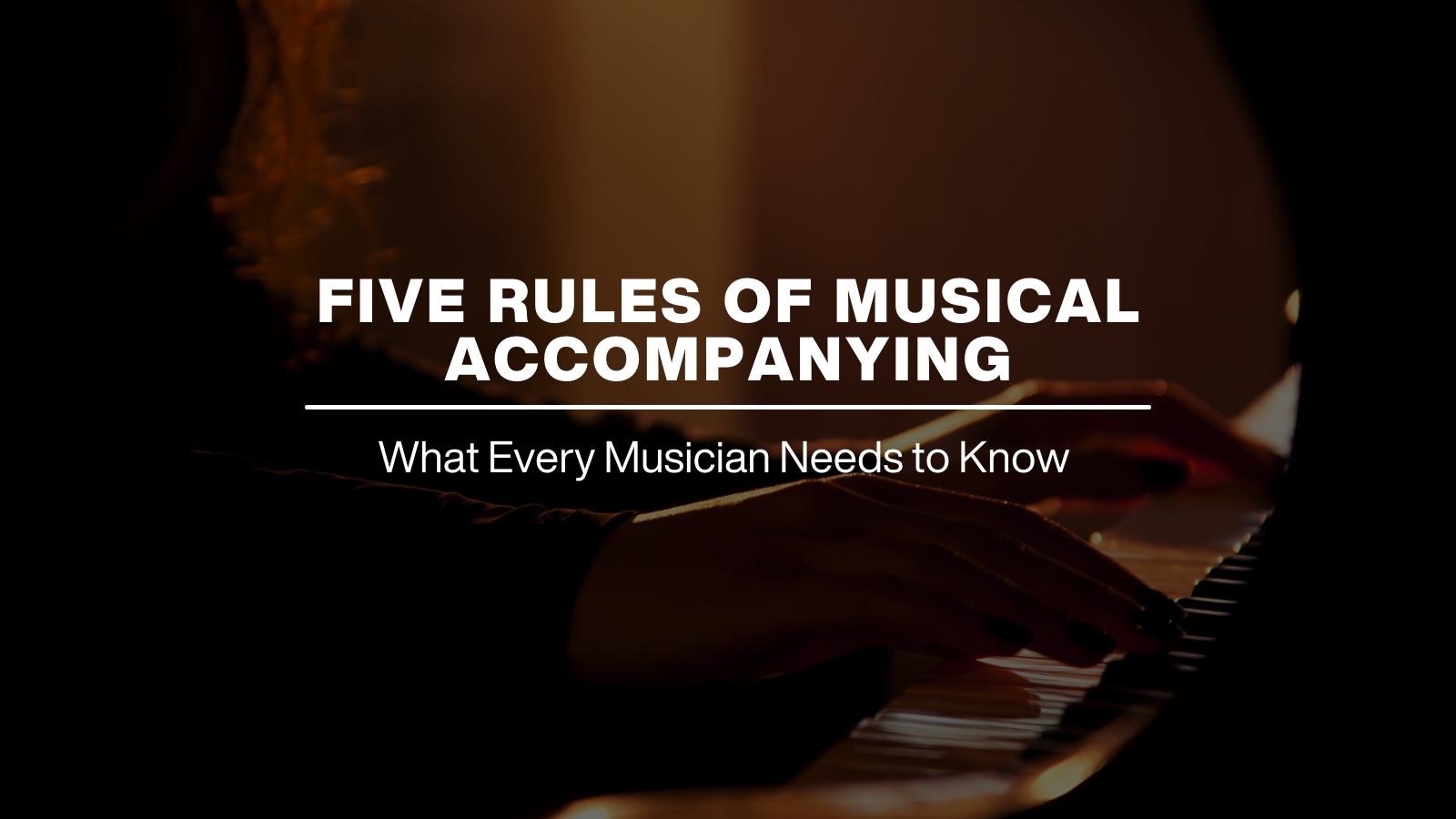by Lindsay Eager
In some circles, if they find out you play the piano, it’s all over for you. Drama club, summer camp, choir, Christmas festivals where caroling is a possibility, dance classes, and especially church. As soon as they know you can play, the deal is sealed. You’re accompanist for life now.
As a young pianist with the word “virtuoso” gleaming neon over my head, I suppose it was only a matter of time before my church snatched me up for this position. I was an excellent sight-reader, adept at transposing on the spot, a quick learner, and most importantly, I had no fear. No stage fright, no nervous knuckles. Totally headstrong and fit for leading a congregation in song. And so, at the tender age of twelve, I was called to serve as our ward accompanist, playing hymns on the giant organ to a group of two hundred and fifty souls singing along to my notes.
(A quick note: in some churches, this is a paid position. Where I’m from, the LDS church (Mormons) believes all church positions are meant to be acts of service, and these positions are assigned through divine revelation from church leaders. Apparently God knew I could play the piano, and thus I was found out.)
What followed was a decade of accompanying my congregation in one form or another—the organ for sacrament meeting, the piano for the children in Primary, even the guitar for youth camps in the summer. And, of course, my accompanying skills followed me to theater in high school and beyond—the last time I accompanied was for my daughter’s elementary school choir concert.
In other words, I’ve spent a lot of time sitting on the bench behind a large keyboard, and over the years, I’ve managed to condense my experiences into a few basic rules for fellow accompanists. If you’ve ever sang along to an instrumentalist, here’s an intriguing peek into the world on the other side of the piano.
RULE ONE: Know the chain of command.
Immediately I’m steering us into dangerous territory. It’s a well-known rule in accompanist-talk that you, as the pianist, are supposed to follow the singer. You’re there to build a framework of music around the people who are carrying the melody, and so if they slow down, you slow down. If they speed up, you speed up. I’m here to tell you this is awful advice. This is how you get crowds of people dragging through “Happy Birthday” like it’s a funeral march.
Technically, the chain of command is supposed to work like this: the accompanist follows the conductor, who believes they are leading the singers. But nine times out of ten, the singers don’t follow the conductor; they follow the music. And if there isn’t a conductor there, you’re now a conductor/accompanist combo!
Now, I’m not talking about rushing through moments when a singer is trying to sustain a note for emotional drama. I’m not talking about marching through a dirge and forcing a singer to keep up with a ridiculous tempo I’ve set. It’s a symbiotic relationship, the one between musician and melodist—but ultimately, the loudest noise in the room is going to be the leader. And that’s almost always the instrument.
Singers will almost always sing slightly slower than you play. And the more singers you add to a group, the more a song can drag—there’s a reason for the stereotype of Midwestern white church-goers, slurring their way through “How Great Thou Art.” As the accompanist, I feel it’s my job to inject energy into the music, even if it’s a ballad. I’m trying to stay one step ahead of you—I’m building the song’s road, one brick at a time, and I want to make sure that brick is set before you step on it.

RULE TWO: Be LOUD.
The accompanying music is not the star of the show. Not in a chapel, not at a music recital, not at the Grammys. But one thing I’ve learned about people who are supposed to be singing along to a piano or an organ—they’re shy. They need your music to be nice and loud so their brains give them permission to sing out the melody.
This is another case where, in my experience, the accompanist sets the tone for the singers or melodists. If I play too quietly, people whisper-sing their lyrics, because very few people want to be the fearless one in the crowd who joyfully croons “My Country, ‘Tis of Thee.” Group singing is meant to feel like a communal effort, and as a member of a congregation, if you think your own voice is going to rise up above the rest, you’ll inevitably turn your volume down.
The louder I play, the louder people will sing, because the less they can hear their own voices. That’s the sweet spot, even if it’s a reverent, gentle, quiet song. As the accompanist, it’s my job to provide a wash of music so everyone can feel safe, singing as anonymously as they’d like.
RULE THREE: Sight-reading is great. Learning chord progressions is gold.
A good accompanist learns their assigned sheet music like the back of their hand, and hopefully also has a solid background in sight-reading (being able to play a song from the sheet music alone, without having practiced it beforehand).
But something that serves as either a supplement to sight-reading or a cheat if sight-reading isn’t your forte? Understanding chord progressions.
I won’t get too music theory here, but if each individual note is a brick in a song, the chord progressions are the wooden frames, the joists, the corners and doorways and the floors. You can absolutely trick your way through a song if you can understand how to decipher its chord progressions—and one of the best teachers of chord progression theory is popular music. Listen to Journey’s “Don’t Stop Believing,” John Denver’s “Take Me Home, Country Roads” and U2’s “With Or Without You.” Can you hear how you could sing one song on top of the other? Chord progression magic!
If you can unlock chord progressions, you can accompany anything.
RULE FOUR: Learn how to vamp
Sure, you usually play a song exactly how it’s written, and the singers sing exactly how they practiced. But there are moments when an accompanist needs to be able to stretch out an introduction, or kill some time while the singers get settled. Maybe the singer’s throat is dry and they need another few measures to sip some water. Maybe the conductor wasn’t paying attention and didn’t lead the group in at the right time. Maybe the sacrament is taking a little longer to prepare than you expected, and so you extend the hymn for a while, give everyone some nice organ music for reflection.
Vamping is an odd thing to really understand, because you’ve got to be able to fill the silence, but also circle right back around to the right measure as soon as the singers or melodists are ready to jump in. Sometimes you have to be able to physically arch around on the bench and see if your vamping time is done—learning how to stall without needing to look at your hands will save you from awkward silences of your own.
And finally,
RULE FIVE: No one’s really listening… unless you mess up.
This one was the hardest for me to swallow. As a young musician, I was used to giving performances—the center of attention, all eyes on me and all ears gobbling up the powerful sounds I created. As an accompanist, you’re not there to be noticed. In fact, it’s best if you’re invisible. The music you create is there to be background. Framework. Your music is now a platform for the singers to reach their heights of musical glory—and if you’re doing it right, no one hears a thing you’re doing.
But all it takes is one bum note and suddenly everyone’s looking right at you. I can still remember hitting wrong notes on the organ at age twelve, the loudest sound in the world—feeling that sharp heat bloom in my cheeks, the congregation faltering as I stumbled to course-correct and find my place again. In these moments, you’re vamping for yourself. The quicker you can recover from mistakes, the better—and in the end, no one will remember them like you will.
Accompanying isn’t a glamorous job, but accompanists are the foundation of any live performances or group singing. Acapella groups have figured out how to do away with them, and that’s fine—but I’d still wager the skills and manners used by accompanists are the ones that lead to success in an acapella group, or an ensemble in a musical, or a simple group singalong. Someone’s got to be in charge. Someone’s got to keep cool if the worst should happen. And someone’s got to give everyone else the courage to sing out, sing loud, sing proud.
For live music--accompanying or enjoying--make sure you grab a set of EARPEACE music earplugs. Our hearing protection is made to protect your hearing without reducing your ability to hear the music. It won't even interfere with accompanying.
Lindsay Eagar is the author of several novels for children and adults, including HOUR OF THE BEES and most recently THE PATRON THIEF OF BREAD. She lives in the mountains of Utah with her husband and their two daughters.





Share:
DOT ROBINSON: MOTORCYCLE RACING'S FIRST LADY
The Great Rann of Kutch